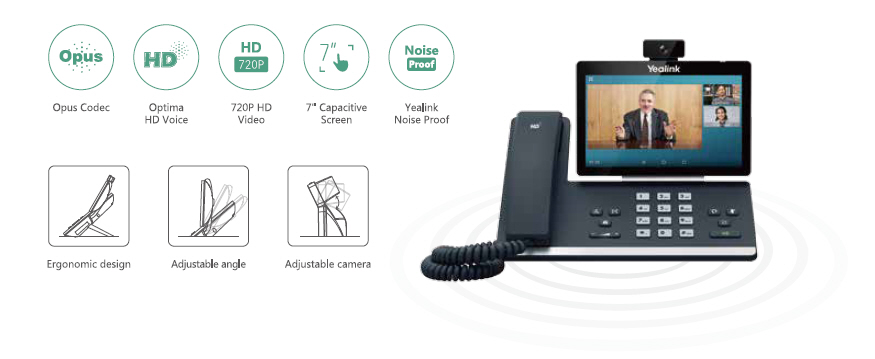Introduction
In today's http://martinnlqc855.wpsuo.com/the-role-of-sip-trunking-in-scaling-your-voip-phone-system fast-paced business environment, efficiency and connectivity are paramount. One of the most significant advancements in communication technology is Voice over Internet Protocol (VoIP). This technology revolutionizes how organizations handle calls, enabling seamless integration with existing business tools. In this article, we will explore the various facets of integrating VoIP phones with existing business tools for maximum impact. We aim to provide a comprehensive guide that not only explains the benefits but also outlines the steps involved in achieving a successful integration.
Understanding VoIP Phone Systems
What is a VoIP Phone System?
A VoIP phone system digitizes voice calls and transmits them over the internet rather than traditional telephone lines. This approach makes it possible to enjoy various features like call forwarding, voicemail-to-email, and video conferencing without hefty additional fees.
Key Features of VoIP Phone Systems
- Cost Efficiency: Lower call rates and no need for physical infrastructure can significantly reduce expenses. Scalability: Businesses can easily add or remove lines based on demand. Advanced Features: Integration with CRM systems, automated attendants, and call analytics offer valuable insights.
Types of VoIP Phone Systems
Hosted VoIP: Managed by a third-party provider over the internet. On-Premise VoIP: Installed locally within an organization's premises. Hybrid Solutions: A combination of both hosted and on-premise systems.The Importance of Integration
Why Integrate VoIP with Business Tools?
Integrating a VoIP phone system with existing business tools amplifies productivity. It allows employees to access important data during calls, ensuring informed conversations and enhancing customer service.

Benefits of Integration
- Improved workflows Enhanced collaboration Streamlined communication channels Better data management
Assessing Your Current Business Tools
Inventory Your Existing Tools
Before integrating your VoIP phone system, assess your current tools such as:

- Customer Relationship Management (CRM) software Project management applications Email platforms
Evaluating Compatibility
Not all tools will seamlessly integrate with your new VoIP system. Ensure compatibility by checking vendor documentation or consulting IT professionals.
Choosing the Right VoIP Phone System
Factors to Consider When Choosing a System
Budget constraints Required features (e.g., call recording) Number of users Future scalability needsPopular VoIP Phone Systems on the Market
- RingCentral 8x8 Vonage
Integrating Your VoIP Phone System with CRM Software
The Role of CRMs in Business Communication
Customer Relationship Management systems are essential for managing interactions with clients. Integrating these systems with your VoIP phone allows for better tracking of client interactions.

Steps to Integrate Your CRM with Your VoIP Phone System
Choose compatible software solutions. Utilize APIs offered by vendors for seamless integration. Train staff on new functionalities.Streamlining Collaboration through Integration
Using Team Collaboration Tools Alongside VoIP Phones
Integrating platforms like Slack or Microsoft Teams can enhance team collaboration through direct calling features.
Benefits of Combining Tools
This integration leads to:
- Instant messaging alongside voice communications File sharing during calls Enhanced project tracking
Enhancing Customer Service through Integration
The Impact on Customer Interaction
Integrating your VoIP system with customer support tools can transform customer service experiences.
Best Practices for Implementation
Leverage call routing features. Use analytics from integrated systems to improve service strategies. Train customer service teams on integrated functionalities.Security Concerns When Integrating Systems
Understanding Security Risks in VoIP Systems
With any cloud-based technology comes security vulnerabilities that businesses must address proactively.
Best Security Practices for Professionals
Use strong passwords and two-factor authentication. Regularly update software and firmware. Monitor network traffic for unusual activities.Measuring Success Post-Integration
Key Performance Indicators (KPIs) to Track
After integration, monitoring certain KPIs helps measure success:
- Call volume statistics Customer satisfaction ratings Employee productivity metrics
Tools for Monitoring Performance
Utilize analytics dashboards provided by your VoIP provider or third-party applications to gather insightful data regularly.
FAQs about Integrating VoIP Phones
li36/ol6/li37li37/ol7li38# Can I integrate my existing phone numbers into a new VoIP system?- Yes, most providers allow you to port existing numbers when switching to their services.
- Employees should be trained on how to use new features effectively and troubleshoot basic issues independently.
- Always read fine print; some providers may charge extra fees for specific services or equipment rentals.
Conclusion
In conclusion, integrating your VoIP phones with existing business tools offers significant benefits that can lead to improved efficiency and productivity within your organization. By carefully selecting compatible systems and employing best practices during implementation, you’ll enable your organization to maximize its communication potential while providing exceptional service experiences for customers.
As we continue into an increasingly digital future, embracing technologies like Voice over Internet Protocol becomes not just beneficial but essential for sustained growth in competitive markets.
By following this guide thoroughly—understanding what makes up a solid foundation in integrating these systems—you'll be well-equipped to make impactful decisions that propel your organization forward in today’s dynamic marketplace!